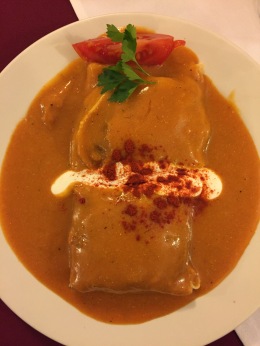On our program’s “vacation week,” my friend Rachael let me tag along on her already-planned trip to Prague and Budapest. We spent Monday morning to Wednesday afternoon in Prague, took a 7-hour train to Budapest, and stayed there for the remainder, until late Saturday afternoon. It was wonderful, beautiful, eye-opening – and freezing cold. A huge, huge thanks to Rachael for being the chief planner and navigator and all-around great companion for this trip!
Prague had a magical small-town feel with its quiet cobblestone streets and lack of traffic. I didn’t realize how much I miss the Christmas season until I got to Prague, where there was a Christmas market on every other street. Budapest felt bigger, more like a real city where people lived and worked, while simultaneously full of history.
Some of the highlights of our time in Prague:
- The Hostel Downtown: It was cute and quiet. We had our own room with private bathroom, which was stellar. We also funnily enough met two guys as we were checking out who were also on their way to Budapest, and met up with them in there. The hostel was friendly and clean and we’d would recommend it to anyone!
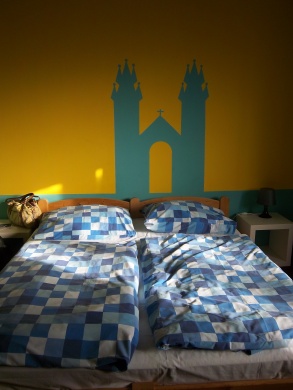
- Prague Castle and St. Vitus Cathedral: Beautiful architecture inside and out, and a high vantage from which to see all of Prague.
- Museum of Communism: Extremely informative and interesting. I honestly didn’t know a great deal about Communism or how recently Prague emerged from its governance.
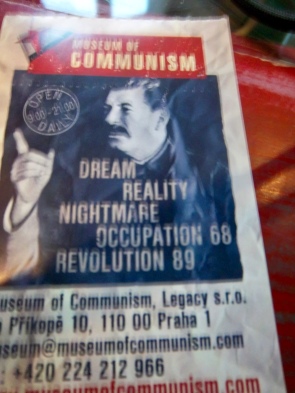
- Jewish Quarter: Several synagogues and the Old Jewish Cemetery. It used to be the home of the Jewish ghetto, full of terrible housing and living conditions, but has since evolved into the most expensive area to live (and shop) in Prague. We went inside of the Spanish Synagogue, which included a display and history of Jews in Prague.
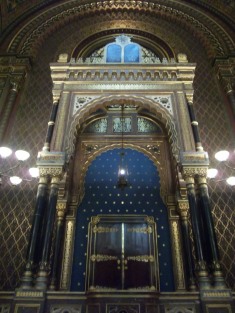
- Den Noc: A family friend recommended this breakfast spot. We had amazing, amazing savory pancake stacks (stack one: mushrooms, onions, goat cheese; stack two: bacon, feta, lime, basil, avocado). Best meal in Prague for sure.
- Velvet Revolution Memorial: This was directly across from our hotel. Had we not checked out the Museum of Communism, we wouldn’t have known what it was or its importance: “This is a memorial to one of the most crucial moments in Czech (and Czechoslovak) history – the beginning of the Velvet Revolution on November 17th. On this date a large crowd, made up predominantly of students, headed towards Wenceslas Square from Vyšehrad, where they had been marking the 50th anniversary of the Nazi occupation. When they reached Národní, they were confronted by riot police, who charged, leaving hundreds severely beaten. Actors and theatre employees immediately called a strike, which led ultimately to the formation of the Civic Forum.”
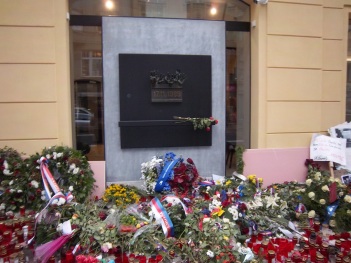
- Hot honey wine: Enough said.
And in Budapest:
- Szent Istvan Bazilika, housing the fist of the first king of Hungary: Beautiful architecture, and the only stop we made it to on our walking tour before freezing to death and needing to dodge inside.
- Memorial for the Victims of the German Occupation/Living Memorial: This memorial is actually very controversial. It’s called the Memorial for the Victims of the German Occupation, but many feel that it’s incorrect and skews facts, trying to paint Hungary in a more positive light and ignore that it was allied with the Third Reich. So there’s now the “Living Memorial,” this unofficial display, which includes photos of Hungarian Holocaust victims, authentic documents and personal relics. More info here (or check out the text in the photos below).
- Ruin pubs/Szimpla Kert: Ruin pubs are a tradition in Budapest. In the beginning of the 21st century, people opened new pubs in old buildings that were slated for demolition. They’re outfitted with old furniture, graffiti and more. Szimpla Kert is the most famous of the ruin pubs, and has tons of different rooms, bars and floors inside. It’s an awesome experience.
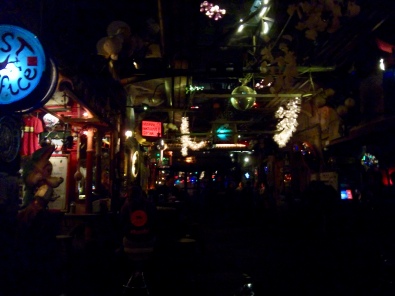
- Shoes on the Danube: This art installation comprises 60 pairs of rusted period shoes cast out of iron intended to represent those killed by the Arrow Cross Militia during the Holocaust, many of whom were shot into the Danube River.
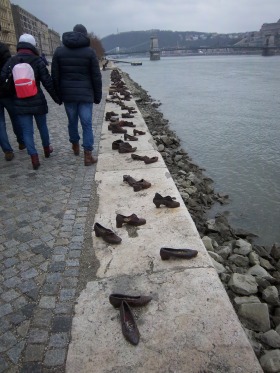
- Dohany Street Synagogue: This is the largest synagogue in Europe and the second largest in the world, and its design is based mainly on Islamic models from North Africa and medieval Spain. It previously stood as the border to the Budapest Ghetto and includes memorials to Holocaust victims.
- The Garden of the Just memorial: The weeping willow statue has names of individual victims of the Hungarian Holocaust engraved on its leaves. The stone columns have names of people who saved Jews.
- The Garden of Remembrance: Where the bodies of more than 2,000 Jews who froze or starved to death in the Budapest Ghetto or who died as a result of the siege and brutality of the Arrow Cross are buried in mass graves. Many are still unidentified.
- Jewish Quarter: We ended up getting an AirBnB in the Jewish Quarter (unintentional, I swear!). It was the best place for food and nightlife – so great choice on our part…! Our favorite dinner spot was Cirkusz – amazing food.
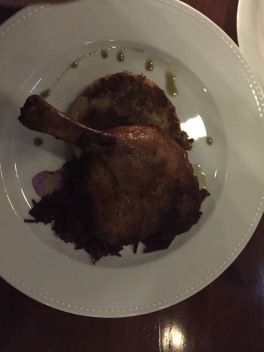
- Szechenyi Baths: The most famous of the thermal baths in Budapest. After five days spent frozen, it was wonderful to be outside but in very hot, large pools fed by thermal springs. The most fun part? Watching people sprint in swimsuits, shivering, between the pools (yes, we did the same).
- Palinka: Fruit-infused brandy. This stuff is everywhere… and dangerous. And delicious. Lots of different flavors in varying strengths between 40%-80%.
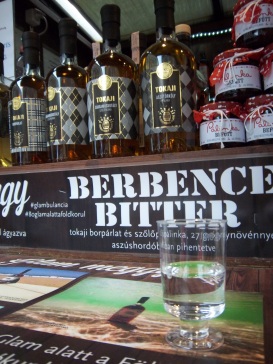
-
Hortobágyi palacsinta: Blintz filled with meat. We finally found it at Kek Rozsa restaurant – delicious. Thanks to our favorite Budapest native Eszti for the recommendation!
